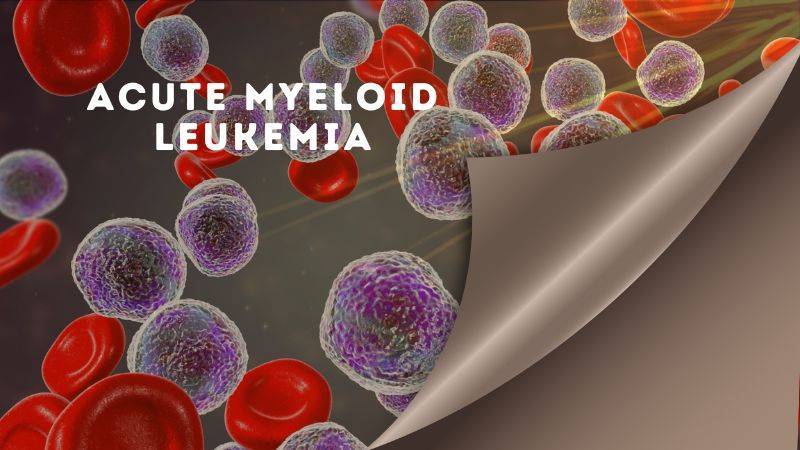“Look up here – I’m in heaven,” sang David Bowie in “Lazarus,” a single from his last album Blackstar, which was released two days before his demise on January 10, 2016.

Bowie had been suffering from cancer du foie, also referred to as liver cancer, for over 18 months. His last album, critics argue, seems to be a foreshadowing of his farewell to the world.
To understand Bowie’s unexpected journey with cancer du foie, let us get to know more about the disease.
What is cancer du foie?
Located on the right side of the lower ribs, the liver is the second largest organ of the human body.

Its primary functions are as follows:
- Breaks down and stores multiple nutrients: Some nutrients ought to be changed/metabolised by the liver in order to be utilised by the body for building energy or repairing body tissues.
- Conversion of fat into energy: It converts the food, particularly carbohydrates and fat, that you consume into energy through chemicals.
- Makes Bile: The liver produces bile, a chemical that aids in digestion. Bile is stored in a small organ below the liver called the gallbladder and passes into the bowel through the bile duct.

- Makes protein: The liver is also responsible for producing proteins such as albumin.
- Aids in clotting: The liver produces substances which clot the blood and helps in healing injuries such as cuts.
- Breaks down toxic substances: It breaks down toxic substances, like alcohol, drugs etc., and rids them from your body through urination and excretion.
When cancer du foie originates from the liver, it is referred to as primary liver cancer. Depending on the type of cells and location of origin, the type of primary liver cancer varies.
Types of cancer du foie are:
- Hepatocellular carcinoma (HCC) is the most common type of liver cancer in adults. It has several subtypes. Fibrolamellar cancer is one such subtype which is typically rare. American Cancer Society estimates that it makes up less than 1% of HCCs.
- Bile duct cancer, also referred to as Intrahepatic cholangiocarcinoma, originates from the bile ducts within or outside the liver. American Cancer Society states that “About 10% to 20% of cancers that start in the liver are intrahepatic cholangiocarcinomas.”
- Angiosarcoma (or haemangiosarcoma) starts in the liver’s blood vessels and is extremely rare. It is considered harder to treat as the cancer cells spread faster in this type of cancer du foie.
- Hepatoblastoma is a rare childhood cancer which typically develops in children younger than 4.
What are the symptoms of cancer du foie?
It is relatively harder to spot the symptoms of cancer du foie as they occur in the later stage. These symptoms also occur from various other diseases, but cancer du foie also remains a possibility. So, it is suggested that you visit the doctor for a check-up if you experience any of the symptoms mentioned below:
- Unintentional weight loss and decrease in appetite
- Jaundice or yellowing of the skin and whites of the eyes

- Itching
- Nausea and feeling sick
- Swollen tummy (abdomen)
- An enlarged liver which feels like a fullness under the ribs on the right side

- An enlarged spleen which feels like a fullness under the ribs on the left side
- Pain in the abdomen (belly) or near the right shoulder blade
- Swelling or fluid build-up in the abdomen (belly)
What are the risk factors that lead to cancer du foie?
The development of cancer is dependent on various factors, such as genetics, age, lifestyle and so on. Thereby, these factors are classified as risk factors or possible causes that can lead to cancer du foie.
They include:
- Age: Although liver cancer is not limited to any age group, it is more common amongst older people. Cancer Research UK states that the highest rates are in 85 to 89-year-olds. Bowie was 68 when he was first diagnosed with cancer du foie.
- Liver cirrhosis: Cirrhosis is scarring of the liver due to previous damage which hinders the way the liver works and increases your chances of getting HCC or hepatocellular carcinoma. This can be caused by various factors. For instance, Bowie’s cancer was also linked with liver cirrhosis, which was caused by heavy drinking for a long period of time, unhealthy eating, non-alcoholic fatty liver disease, and hepatitis B and C.
- Smoking: Cancer Research UK estimates that 20 out of 100 cases of liver cancer in the UK are caused by smoking. The case of Bowie was no different, as he began smoking at the age of 20.

- Body Weight and Diabetes: Obesity, unhealthy eating habits along with diabetes are also contributing factors in the development of cancer du foie.
- Alcohol: Long-term consumption of alcohol causes cirrhosis and can also damage the DNA inside the liver cell. According to Cancer Research UK, 7 out of 100 cases of liver cancer (7%) in the UK are caused by drinking alcohol.
- Family history and previous health condition: Bowie’s previous health condition, particularly the six heart attacks that he survived, also contributed to the speedy multiplication of cancer cells.
Some other factors include:
- Non-alcoholic fatty liver disease
- Infection with hepatitis viruses
- Human immunodeficiency virus (HIV) or AIDS
- Aflatoxin
- Betel quid
- Gallstones or gallbladder removal
- Chemicals
- Liver flukes (parasitic worms)
Can you get cancer de foie? What are the chances of being diagnosed with cancer du foie?
According to Cancer Research UK, around 6,200 people are diagnosed with cancer du foie annually, estimated to be around 17 new cases each day in the UK.
Organisations such as the National Institute of Health (NIH) and the American Society of Clinical Oncology (ASCO) have analysed the prevalence of cancer du foie in the United States. According to SEER, approximately 1.1% of people in the US will be diagnosed with liver and intrahepatic bile duct cancer at some point during their lifetime, based on 2017–2019 data.
ASCO further studies how the death rate of liver cancer doubled between 1980 and 2013. Cancer du foie is also labelled as the third leading cause of death globally.
It is more common in men than in women. The risk of developing liver cancer gets higher as we get older.
According to COS, the statistics in France demonstrate that one in two men and one in three women will be diagnosed with cancer by age 85.
How can cancer du foie be diagnosed?
Bowie was diagnosed with cancer du foie 18 months before his demise but had not publicised his condition. The average prognosis after a liver cancer diagnosis is generally about a year.
While liver cancer can be typically treated well after early diagnosis, advanced stage cancer is harder to treat, which must’ve been the case with Bowie.
It can be detected earlier through regular screening via alpha-fetoprotein (AFP) blood tests and ultrasound exams, particularly in patients with a higher risk of liver cancer.
This risk factor is determined by evaluating your previous medical history and physical examination.
The diagnosis of cancer du foie can be detected through tests such as:
- Imaging Tests
They use x-rays, magnetic fields, or sound waves to create pictures of the inside of your body. These include ultrasound, computed tomography (CT) scan, magnetic resonance imaging (MRI), angiography and bone scan.

- Biopsy
In a biopsy, the doctors take a tissue sample from a particular area and detect the cancer cells. This tissue is collected through various means such as needle, laparoscopic and surgical biopsy.
- Lab Tests
These include varying blood tests. The test for AFP (Alpha-fetoprotein) in your blood is most commonly associated with cancer du foie. A high level of AFP can result from multiple factors.
However, this test is helpful for people who are already diagnosed with liver cancer as it can trace the effectiveness of the treatment procedure.
Other blood tests include viral hepatitis, blood clotting, complete blood count (CBC), kidney function, and liver function tests (LFTs).
What are the stages of cancer du foie?
After the diagnosis, the doctors try to locate the spread of cancer cells which is referred to as the staging process. It is crucial in order to determine the best treatment.
Cancer du foie ranges from stage I to stage IV; each successive stage signifies a higher range of cancer cells. This is also called the number staging system, where Stage I signifies the early stage and stage IV signifies the advanced stage.
The stage of cancer du foie can be determined through various systems. The AJCC (American Joint Committee on Cancer) TNM system is typically used in the United States. It is based on three key pieces of information, the size of the tumour (T), the spread to nearby lymph nodes (N) and the spread (metastasis) to distant sites (M).
Doctors also use the Barcelona Clinic Liver Cancer (BCLC) staging system and the Child-Pugh system. The latter is used to evaluate your liver’s performance, particularly in cirrhosis cases. On the other hand, BCLC is used to help make treatment decisions for hepatocellular carcinoma.
Some other systems to measure the stages of cancer du foie are the Cancer of the Liver Italian Program (CLIP) system and the Okuda system.
There is no particular staging system which is universal as each is used in different parts of the world and often serves distinct purposes. Therefore, they can’t be compared. To understand what staging system your doctor uses to determine the stage, be sure to question them about the same.
What are the treatments available for cancer du foie?
Bowie began his treatment in mid-2014. But after a year, his cancer had metastasised and spread throughout his body.
The treatment procedure is selected depending on various factors, such as:
- The location of the cancer
- The size/stage of the cancer
- The type of cancer du foie
- The age, general health, previous medical ailments, and condition of the liver
The treatment may include surgery, chemotherapy, using heat to destroy the cancer, using targeted medicines, and radiotherapy. The details of the procedure are as follows:
- Surgery:
If the detected tumour is small in size, it is possible to remove it through a surgical operation. This is referred to as a partial hepatectomy, where only a part of the liver is removed. It is conducted on patients who don’t have severe cirrhosis.
It is even possible to conduct surgery if the growth of the cancer cells is limited to the organ, in which case a liver transplant would also be conducted. However, finding a donor is a long process, and patients with severe liver cirrhosis are considered unfit for a transplant.
- Chemotherapy:
This procedure eliminates cancer cells through the use of medicine and can be used both before and after the surgery. Before the surgery, it is used to shrink the size of the tumour to make it feasible for surgery. After the surgery, it is typically used to ensure that the cancer cells don’t return.
The most common chemotherapy drugs for ministering liver cancer comprise of Gemcitabine (Gemzar), Oxaliplatin (Eloxatin), Cisplatin, Doxorubicin (pegylated liposomal doxorubicin), 5-fluorouracil (5-FU), Capecitabine (Xeloda), and Mitoxantrone (Novantrone). These drugs are often used in combination.
Chemotherapy can be administered in different ways. In systemic chemotherapy, drugs are injected into the vein or taken orally. In regional chemotherapy, drugs are injected right into the vein that leads to the liver. Hepatic artery infusion (HAI), or chemo is given directly into the hepatic artery, is one such type.

HAI is slightly different from chemoembolisation because surgery is needed to put an infusion pump under the skin of the abdomen (belly). Embolisation infiltrates drugs directly into an artery in the liver to block or reduce the blood flow to a tumour in the liver.
The liver has two blood supplies, the portal vein and the hepatic artery. The latter dominantly feeds cancer cells, so blocking it would shrink the possible growth of the tumour.
- Using heat to destroy the cancer:
Thermal ablation consists of the use of heat, which destroys the cancer cells without terminating them. It is used in cases where surgery is not a feasible solution. However, it is not as effective as surgery.
Ablation is apt for tumours no larger than 3 cm across (slightly over an inch). It is sometimes used with embolisation for slightly larger tumours (1 to 2 inches or 3 to 5 cm across).

Some ablation techniques are radiofrequency ablation (RFA), microwave ablation (MWA), cryoablation (cryotherapy), and ethanol (alcohol) ablation.
- Radiation Therapy
During this procedure, the patient is subjected to high-level energy rays to kill the cancer cells. It is usually given through external beam radiation therapy (EBRT), which focuses radiation from a source outside of the body on the cancer cells. Newer radiation techniques are also emerging, such as stereotactic body radiation therapy (SBRT), which is shorter in duration.
- Targeted Drug Therapy
It works differently than standard chemotherapy drugs and has different side effects. While the standard chemotherapy eliminates cancer cells in general, this is opted to tackle liver cancer cells specifically. This includes drugs such as kinase inhibitors and monoclonal antibodies.
What is life like with cancer du foie?
Ivo Van Hove, who directed Bowie’s musical Lazarus, described Bowie as a “man fighting.” He says, “He fought like a lion and kept working like a lion through it all. He was fighting death, and he wanted to continue and continue. Afterwards, we were sitting behind the stage, and he said, ‘let’s start a second one now, the sequel to Lazarus’.”

For some people with cancer du foie, treatment can terminate or eliminate the cancer cells. The completion of the treatment can be both stressful and exciting.
Sometimes, the cancer cells get completely eradicated with minimal chances of returning. But for many people with cancer du foie, the cancer may never go away entirely, or it might recur in another part of the body.
In the latter case, the patients may continue to receive regular treatments with chemotherapy, radiation therapy, or other therapies to monitor and limit the growth of the cancer cells and keep it under control for as much time as possible.
The follow-up care is crucial and consists of general questioning, exams and blood tests, such as alpha-fetoprotein (AFP), liver function tests (LFTs), imaging tests etc.
It ranges from every 3 to 6 months for the first 2 years, then every 6 to 12 months and also evaluates any side effects that might’ve resulted from the treatment.
However, it is not just the physical health that remains the focus during the follow-up. Patients are also recommended to share and talk about their thoughts and feelings to help them cope.
Bowie’s case fell into the latter to the point where he stopped his treatment altogether. Three months before Bowie’s death, he was working with music director Johan Renck who remarked, “He found out that it is over…. we’ll end treatment or whatever capacity that means that his illness has won.”
What are the survival rates of cancer du foie?
According to the NIH SEER report, the 5-Year relative survival rate is 20.8% from 2012 to 2018 in the United States. Relative survival estimates the percentage of patients expected to survive their cancer.
However, it is to keep in mind that the relative survival rate is based on a large group and is a general estimate that can’t be applied to individual cases as no two cases are entirely alike.
The survival rate also depends on the stage of cancer du foie. If the spread of the cancer cells is limited to its place of origin, it is referred to as localised, which is broadly stage I. If the cancer has spread to other organs, it is called regional or distant.
 The 5-year survival for cancer du foie is normally increased in younger people compared to older people. Cancer Research UK estimates that around 25% of people aged 15 to 39 survive cancer du foie, whereas the survival estimates decrease to 5% for people aged between 80 to 99. (borrowed from: https://seer.cancer.gov/statfacts/html/livibd.html)
The 5-year survival for cancer du foie is normally increased in younger people compared to older people. Cancer Research UK estimates that around 25% of people aged 15 to 39 survive cancer du foie, whereas the survival estimates decrease to 5% for people aged between 80 to 99. (borrowed from: https://seer.cancer.gov/statfacts/html/livibd.html)
What does the latest research on cancer du foie say?
The current research is globally oriented toward searching for better ways to prevent, diagnose and treat cancer du foie. Cancer Research UK documents various clinical trials which undertake this pursuit.
For prevention, researchers are currently working toward developing a hepatitis C vaccine. For screening, researchers are trying to locate other biomarkers which may assist in a more accurate diagnosis of cancer du foie at an early stage.
Researchers are also drawing a comparative analysis of varying techniques to understand which is more effective. To reduce the risk of cancer cells returning, researchers are looking for an appropriate adjuvant treatment for cancer du foie. For instance, in one trial, researchers tested an immunotherapy drug called pembrolizumab to evaluate its effectiveness in the reduction of this risk.
Watch out this pace for more updates on new research.






